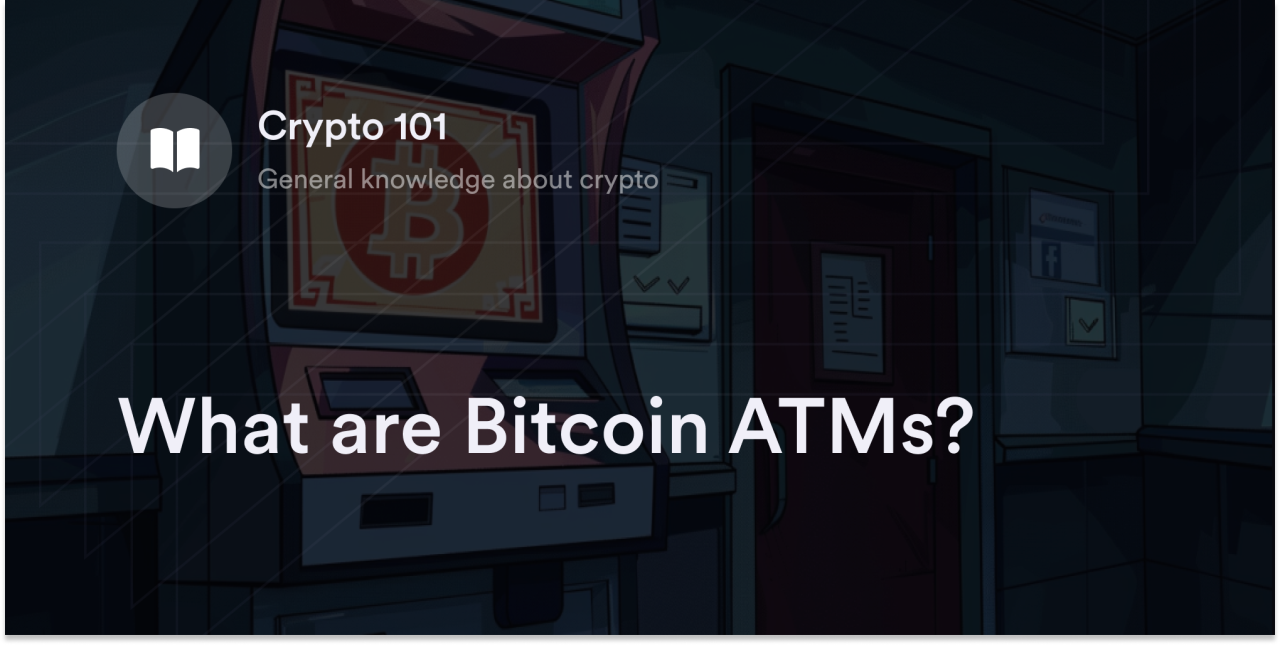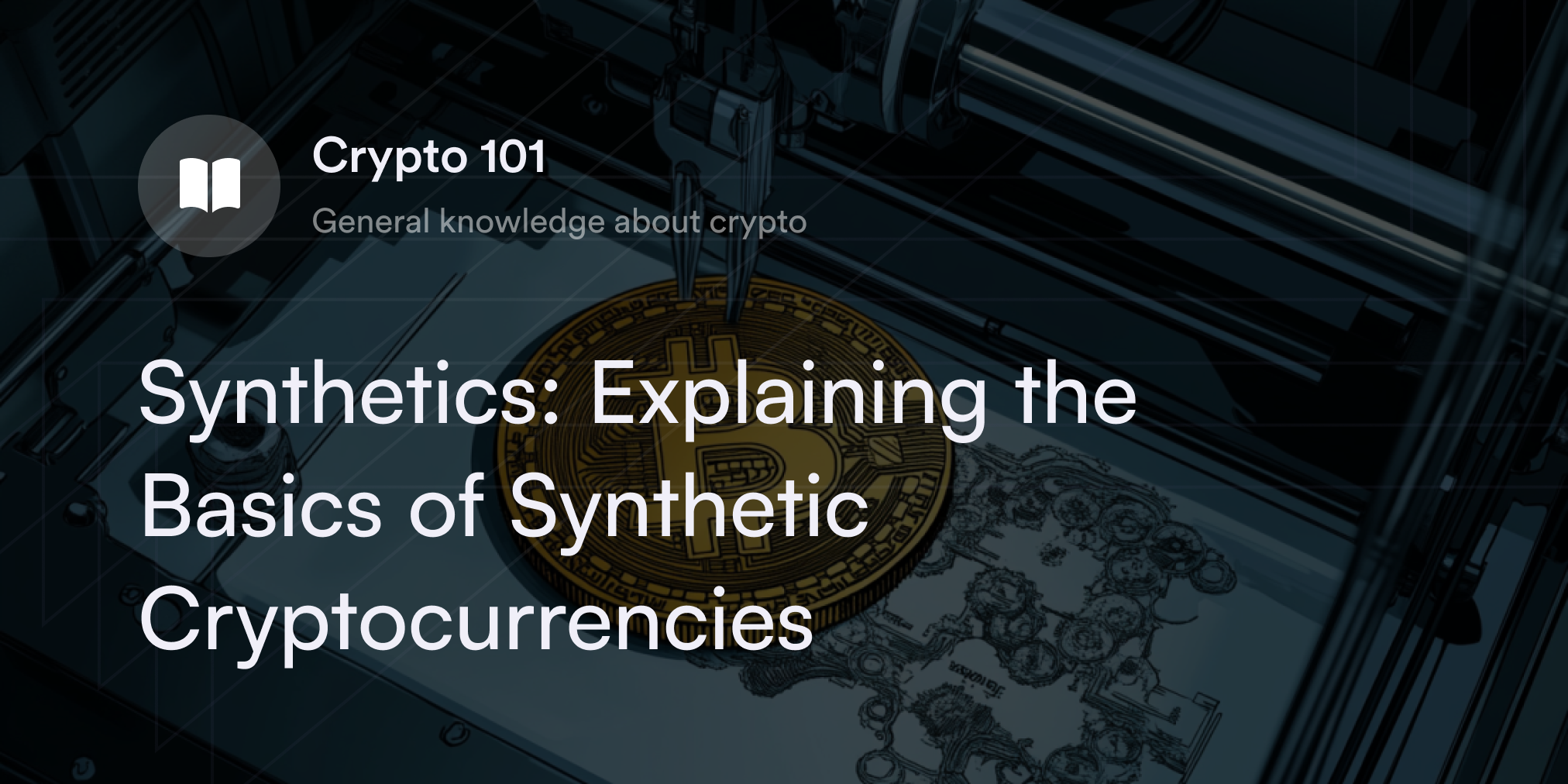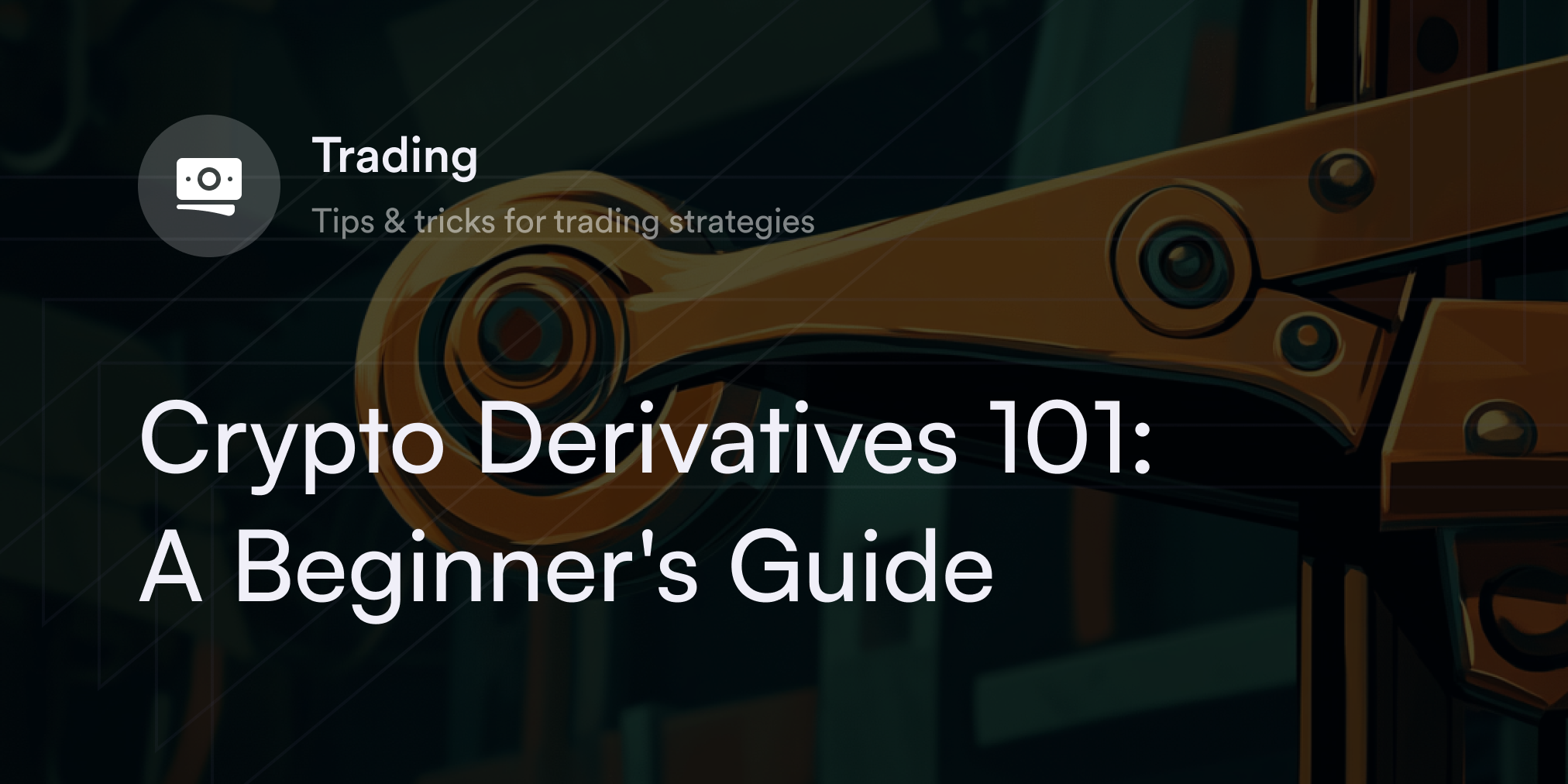


Ever since the cryptocurrency market surpassed a $1 trillion valuation in 2021, there’s been a surge in demand for financial services offering swift conversions between fiat and digital currencies.
Although cryptocurrency exchanges remain the dominant portals for trading activity, there are alternative ways traders can add this asset class to their portfolios. For instance, there are 40,000 Bitcoin ATMs worldwide. It’s becoming increasingly common to spot these bright orange boxes on a trip to the local convenience store, mall, or gas station. But what are Bitcoin ATMs used for? And are they a secure way to interact with cryptocurrency?
What is a Bitcoin ATM?
A Bitcoin ATM (“BTM” or “BATM”) is a physical machine customers use to exchange cash for BTC. These electronic kiosks work similarly to traditional ATMs but don’t require users to have a personal account with a financial institution.
Because cryptocurrencies—including BTC—exist on decentralized payment ledgers called “blockchains,” BTMs send assets to users on Bitcoin’s peer-to-peer (P2P) network. Although most BTMs only allow users to buy Bitcoin, a few devices also permit customers to sell the cryptocurrency for cash.
Funnily enough, the name “Bitcoin ATM” is rather misleading. Many of these devices have access to other assets, such as Ethereum (ETH), Bitcoin Cash (BCH), and Litecoin (LTC).
A Vancouver-based café called Waves was the first business to install a Bitcoin ATM back in 2013. Since then, Bitcoin-friendly ATMs have spread throughout the world, with the highest concentration of these devices in North America. According to data from Coin ATM Radar, 93% of the world’s Bitcoin ATMs (about 31,000 devices) are in Canada or the USA. Europe holds about 4.4% of total Bitcoin ATMs, while Asia has about 1.1%. Examples of Bitcoin ATM operators include Bitcoin Depot, CoinCloud, and CoinFlip.
How Does a Bitcoin ATM Work?
Each BTM has slightly different payment instructions, but most accept credit and debit cards from major companies like Visa and MasterCard. Sometimes, Bitcoin ATM companies have mobile apps and digital accounts — like the Bitcoin Depot App, for example — but these aren’t always necessary to use a BTM.
Those who want to buy assets from a BTM must first choose the type and amount of cryptocurrency before inserting their debit or credit card to pay. Once the card transaction clears, the Bitcoin ATM asks users for a compatible crypto wallet address for the cryptocurrency they purchased. For example, if someone buys 0.0025 BTC at a BTM, the kiosk needs to scan a BTC wallet address to send the Bitcoin successfully. In this case, after the buyer shares a copy of their public BTC wallet address, the BTM sends the 0.0025 BTC to the user’s private account.
How to Find a Bitcoin ATM
Bitcoin ATM manufacturers, like Bitcoin Depot, have a “Locations” tab on their official websites where users can enter their zip codes to find nearby ATM locations. Third-party websites also show the locations of all crypto ATMs in a given area. For instance, Coin ATM Radar has a “Bitcoin ATM Map” showing the locations of BTMs from multiple manufacturers.
How to Use a Bitcoin ATM
Anyone with experience using bank ATMs and crypto wallets should be well-equipped to use a Bitcoin ATM. However, even those new to cryptocurrency should find buying and sending BTC with a BTM straightforward. Although each device has slightly different instructions, most follow similar steps. Here’s how to use a BTM:
Download a crypto wallet: You can use any cryptocurrency wallet at a Bitcoin ATM so long as the address is compatible with the cryptocurrency you wish to send. It doesn’t matter whether you use a hot or cold wallet; what’s important is entering the correct cryptocurrency address so you don’t accidentally burn the coins. For example, if someone buys Bitcoin from a Bitcoin ATM, they need a BTC wallet address. Should the buyer send Bitcoin to an Ethereum address, they’ll never receive their BTC—and the process is irreversible.
Find a crypto ATM: Websites like Bitcoin.com and Coin ATM Radar have interactive maps to locate nearby BATMs. Type a local zip code in the “Locations” tab to see local Bitcoin ATMs and the coins they support.
Choose an amount of cryptocurrency: Once you’re at a Bitcoin ATM, select the cryptocurrency you wish to buy and the amount. For example, if someone wants to buy 0.05 Ethereum, they must select “Ethereum” and enter “0.05 ETH” before moving to the next page.
Insert a credit or debit card: Most crypto ATMs accept credit and debit cards to pay for assets. To pay, swipe, tap, or insert your card and wait for a confirmation notice on the ATM’s screen.
Paste or scan a public wallet address: To finalize the transfer, open your crypto wallet, select the asset you want to send, and share the appropriate public blockchain address. For instance, if a BTM customer wants to transfer 0.05 ETH to a MetaMask account, they need to open their MetaMask app, select “Ethereum,” and click “Receive” to reveal a QR code. Most Bitcoin ATMs allow users to scan this QR code to share the public wallet address securely, but some require you to enter the information manually.
Monitor the transaction: After paying with a card and scanning a public wallet address, the BTM prints a receipt with the transaction details. Enter the “Transaction Hash ID” on this receipt into a blockchain explorer such as Blockchain.com to verify the transaction is in process.
How Much Does it Cost to Use a Bitcoin ATM?
Bitcoin ATMs almost always charge extra transaction costs and convenience fees to use the service, but the amount customers pay depends on the ATM’s manufacturer. Most reports suggest Bitcoin ATMs charge a 6–20% premium for every transaction. Customers should check their ATM company’s fee schedule for specific information about additional charges and gas fees.
Bitcoin ATMs: the Good and the Bad
Bitcoin ATMs are an attractive option for some cryptocurrency traders, while others choose to stay away. People who prioritize privacy and simplicity may find the pros of using a Bitcoin ATM outweigh its cons—but in order to make an informed decision, it's important to understand both.
Bitcoin ATM pros
Private P2P transactions: Unlike setting up a profile on a centralized cryptocurrency exchange (CEX), Bitcoin ATMs typically don’t collect personal data to make a transfer. Users may need to enter a phone number into a Bitcoin ATM, but it’s rare for these machines to ask for a person’s name, home address, or driver’s license to process small transactions.
Simple interface: Bitcoin ATMs have the same look and feel as traditional ATMs, making them more familiar to novice traders. Anyone used to transferring money out of their bank accounts via ATMs should have an easy time following the instructions on these crypto kiosks.
Fast and convenient: When users confirm their wallet address and pay for their crypto, a Bitcoin ATM will promplty send the digital assets to the blockchain. Customers also have the option to monitor their transfer in real-time using the Bitcoin ATM’s provided “Transaction Hash ID” on an online blockchain explorer and double-check the transaction.
Bitcoin ATM cons
High average fees: Crypto ATMs are notorious for charging higher transfer fees versus CEXs and decentralized exchanges (DEXs). Most analysts estimate that people pay a 6% - 20% premium for cryptocurrency from a BTM, which is well above the average rates on competing crypto trading platforms.
Not available everywhere: Currently, the Bitcoin ATM industry is concentrated in the North American market. People outside the U.S. and Canada may need to travel a long distance to access their closest crypto ATM.
Limited coins: Although more Bitcoin ATMs now offer “altcoins” like Ethereum, Litecoin, and Bitcoin Cash, traders will rarely find more than four cryptocurrencies on these devices. Traders interested in a wide selection of coins and tokens typically do not like the limited options on Bitcoin ATMs.
Are Bitcoin ATMs Safe?
Law enforcement agencies, including the FBI, are concerned about the anonymity Bitcoin ATMs could provide to criminals. In particular, governments warn customers about the rising number of scams that convince victims to send BTC through a Bitcoin ATM to a fraudster’s QR code.
The blockchain research firm Chainalysis reported roughly 75% of the illegal funds from Bitcoin ATMs go to scammers selling credit or debit card information on the Dark Web. Some Bitcoin ATM companies, like Bitcoin of America, also faced criminal charges for allegedly setting up unregistered devices and laundering funds through their kiosks.
Since many Bitcoin ATMs don’t collect personal data for small transactions, it’s difficult to know how much money from these machines is going towards criminal activities. However, the enhanced privacy Bitcoin ATMs offer users may face greater scrutiny as cryptocurrencies grow as an asset class. That said, if people use a registered Bitcoin ATM with a strong track record in the cryptocurrency community, it’s usually safe for minor transactions.
To avoid fraud and scams, traders interested in using a Bitcoin ATM should verify the machine is licensed with their country’s Treasury Department and has a transparent history for safety in the cryptocurrency ecosystem. Similar to traditional ATMs, using BTMs during the day in high-traffic areas is safest. And strange messages with instructions to use a Bitcoin ATM to send assets to a QR address should be ignored and reported to law enforcement. BTM users should exercise the same caution they would exercise with any ATM that is not provided by their bank or a trusted institution, and even still, exercise additional caution.
Eligible Traders Can Buy or Sell Bitcoin Perpetuals on dYdX
Unlike buying cryptocurrency directly from a Bitcoin ATM, crypto perpetuals give eligible traders price exposure to a digital asset without directly holding the underlying asset. Although perpetuals on dYdX work like standard futures contracts, they don’t have expiration dates. Instead, eligible buyers and sellers pay fees or receive rebates to maintain their position for as long as they feel comfortable. To learn more about how Bitcoin perpetuals differ from buying BTC directly, check out dYdX Academy. Plus, our blog is a great place to discover more about our exchange.
Disclaimer
The content of this article (the “Article”) is provided for general informational purposes only. Reference to any specific strategy, technique, product, service, or entity does not constitute an endorsement or recommendation by dYdX Trading Inc., or any affiliate, agent, or representative thereof (“dYdX”). Use of strategies, techniques, products or services referenced in this Article may involve material risks, including the risk of financial losses arising from the volatility, operational loss, or nonconsensual liquidation of digital assets. The content of this Article does not constitute, and should not be considered, construed, or relied upon as, financial advice, legal advice, tax advice, investment advice, or advice of any other nature; and the content of this Article is not an offer, solicitation or call to action to make any investment, or purchase any crypto asset, of any kind. dYdX makes no representation, assurance or guarantee as to the accuracy, completeness, timeliness, suitability, or validity of any information in this Article or any third-party website that may be linked to it. You are solely responsible for conducting independent research, performing due diligence, and/or seeking advice from a professional advisor prior to taking any financial, tax, legal, or investment action.
You may only use the dYdX Services in compliance with the dYdX Terms of Use available here, including the geographic restrictions therein.
Any applicable sponsorship in connection with this Article will be disclosed, and any reference to a sponsor in this Article is for disclosure purposes, or informational in nature, and in any event is not a call to action to make an investment, acquire a service or product, or purchase crypto assets. This Article does not offer the purchase or sale of any financial instruments or related services.
By accessing this Article and taking any action in connection with the information contained in this Article, you agree that dYdX is not responsible, directly or indirectly, for any errors, omissions, or delays related to this Article, or any damage, injury, or loss incurred in connection with use of or reliance on the content of this Article, including any specific strategy, technique, product, service, or entity that may be referenced in the Article.







